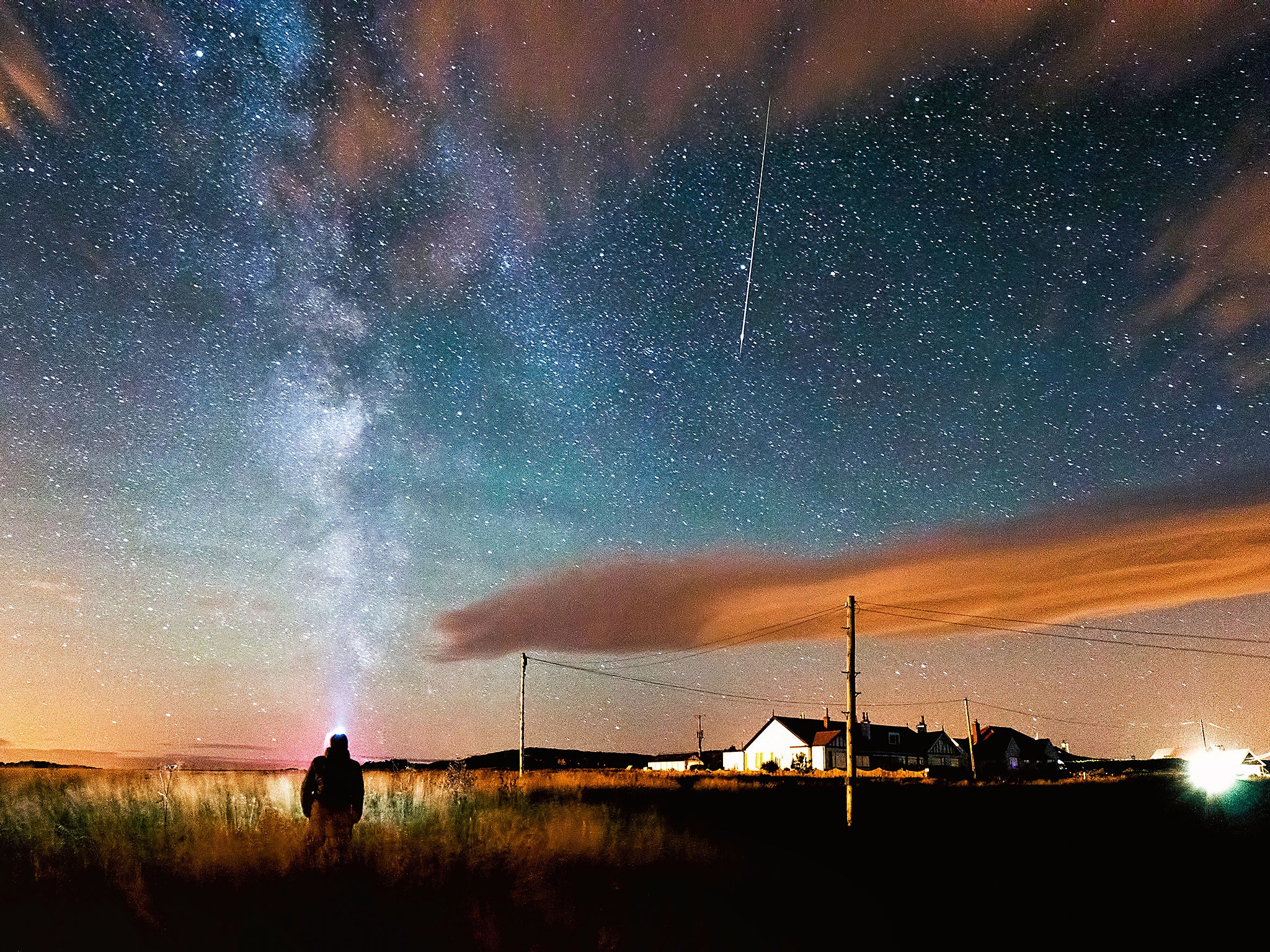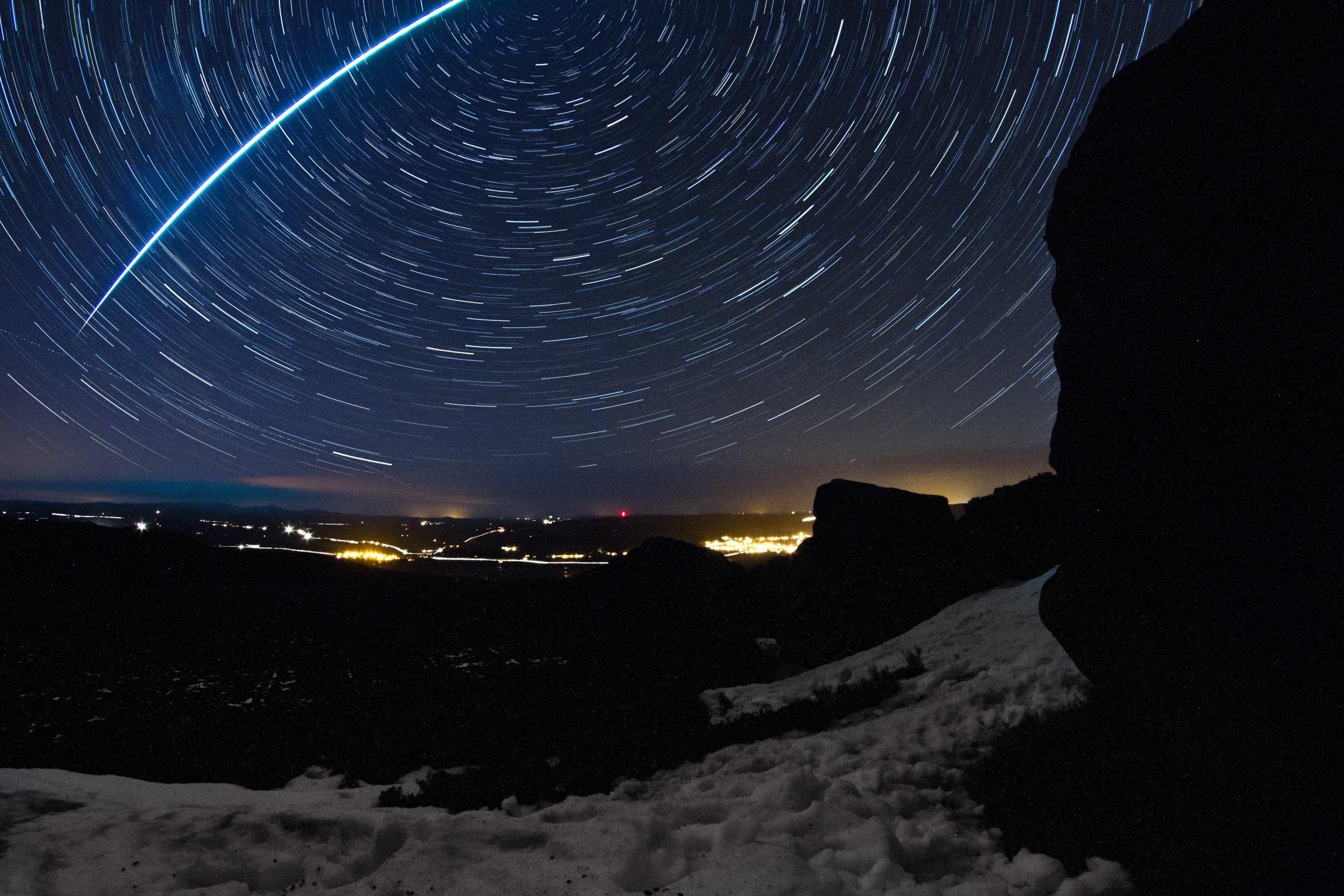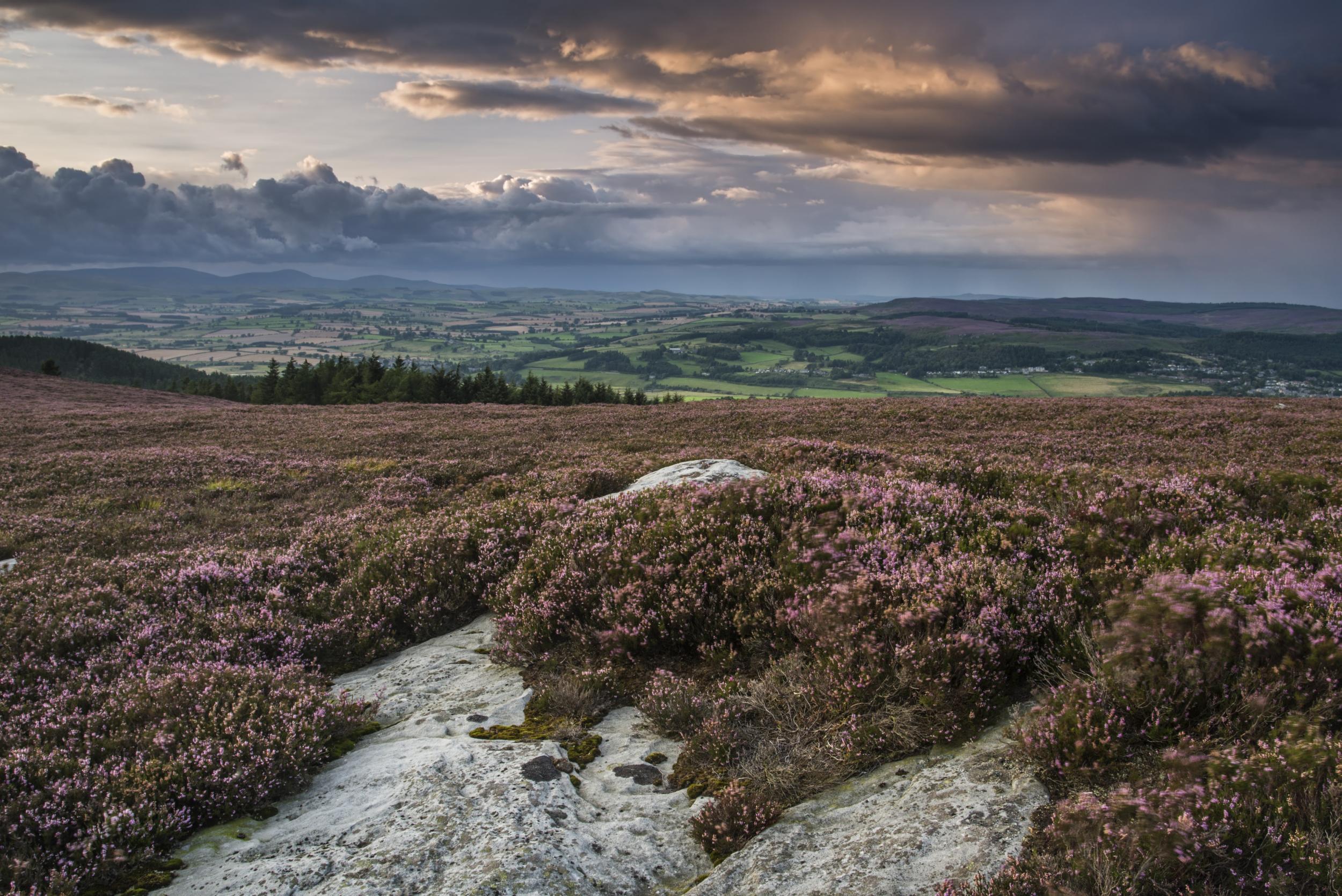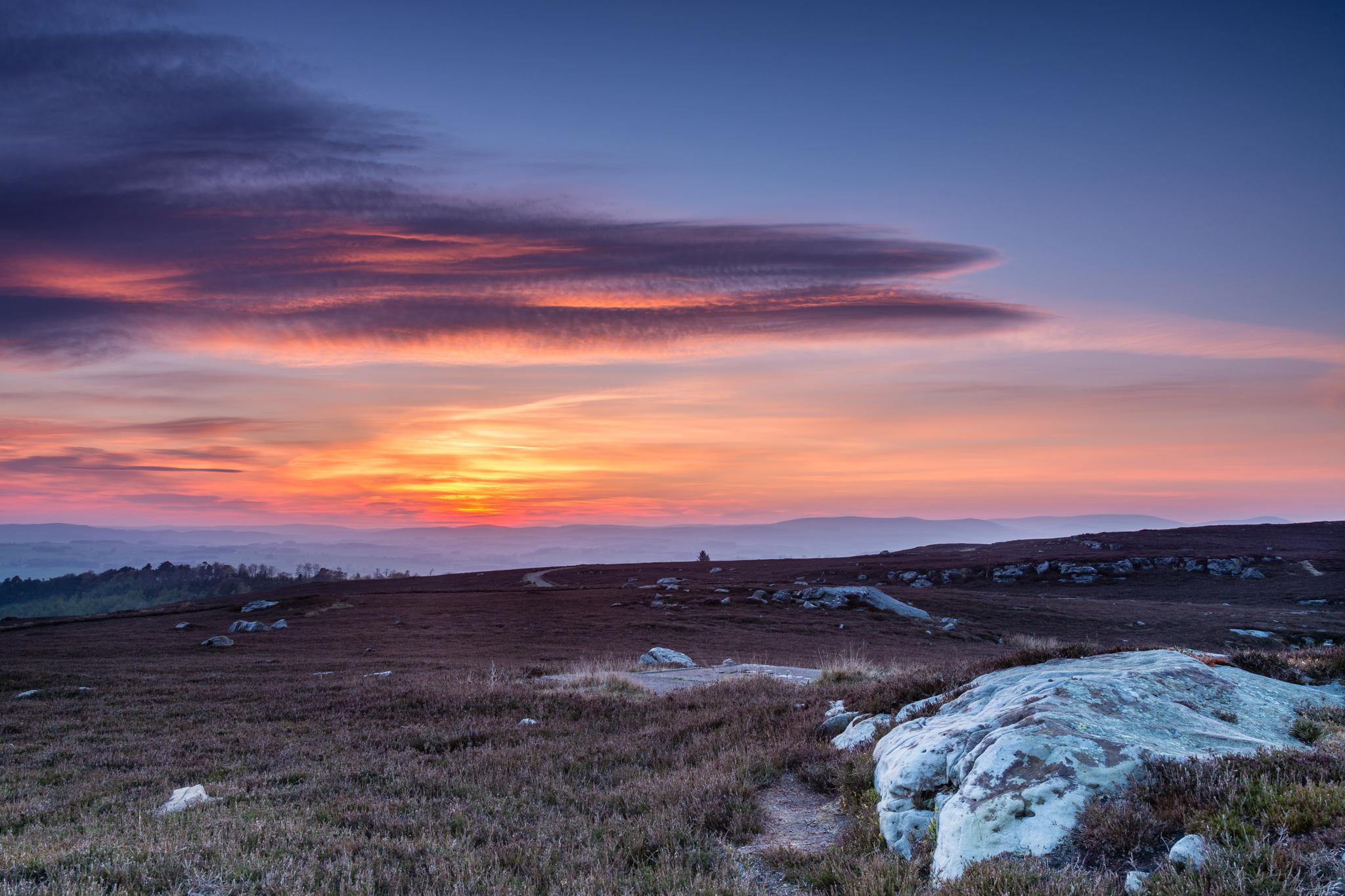Looking for clear views of next week's meteor shower? Head to Northumberland
The spooky legends and open landscapes of Simonside make it the perfect spot for stargazing

Fewer than 10 per cent of people in the UK can see the Milky Way from where they live, according to the International Dark Sky Association. And thanks to urban light pollution, it’s getting harder than ever to catch a glimpse of the stars. So where better to go to savour the increasingly obscured commodity that is the universe than Northumberland, England’s emptiest county?
Northumberland was awarded International Dark Sky Park status in December 2013, and its wild and sparsely inhabited lands can seem all but permanently cloaked in darkness at this time of year.
I dropped down into the forest at dusk from the crag of Simonside, the sky to the west slicing through several shades of red. Then a monochrome cloak swelled up from the eastern horizon and twinkling lights began to emerge in the valley below.
I’d just walked across the ridge of Simonside; it’s a scintillating experience, and one that will be even more spectacular in a few days' time, when one of the greatest meteor shows, the Geminids, will display their wares. Annually, at this time of year, the debris from an asteroid-type object known as 3200 Phaethon crashes into Earth’s upper atmosphere at some 80,000 miles per hour, vaporising as colourful Geminid meteors (the name comes from the fact the shower appears to radiate from the Gemini constellation).

The peak night for the Geminids is 13 December, but several days either side are expected to be rewarding as well. The main show clocks in after midnight but the early evening hours are the best time to try to catch an outlying earth-grazer; a slow-moving, long-lasting meteor that travels horizontally across the sky. All this will take place against a backdrop of up to 2,000 visible stars, far more than you will see anywhere with an urban glow.
The flanks of Simonside, 35 miles north west of Newcastle and pushing up towards the Scottish border, will be a wonderful place to watch such a spectacle. A short, torch-lit stroll along the forest track from the car park should be sufficient.
The landscape is pretty special by day too, as I discovered on this fine circular loop around and up onto Simonside’s crags. The track is cushioned with fallen pine needles, their damp distinctive scent hanging in the air. The red squirrels that inhabit these conifer forests were being uncooperative but chirpy wrens flitted through the undergrowth and I caught glimpses of deer grazing on more open land.

After a half-hour swaddled in pine trees, I suddenly left the treeline, and the much-heralded empty and open landscape sprung itself upon me. The next hour’s walk was invitingly laid out ahead: my path would cut up the heathery flanks of Simonside where vertical slabs of rock of great symmetry plunge earthward.
I emerged upon a high ridge broad enough to form a plateau. The county brands itself as the land of the big skies and from Simonside Crag it was easy to see why this is the case. To the north-west, the Cheviot, the highest mountain in the county, boasted a smattering of snow, its flanks falling away to form the Scottish border. Looking west I picked out Skiddaw and Blencathra in the Lake District, while to the east the river Coquet coiled its way to the North Sea.
It may have been Northumberland, but the geology reminded me of both Dartmoor and the Peak District, with outcrops and overhangs of sandstone rock, their contours swirling and chiselled, standing in silhouette against what was left of the light.
I followed a good path of flagstone paving past a series of features: Simonside Crag itself, at 419m is marked by a high cairn; 200m farther on was Old Stell Crag, the most substantial edge; and later I skimmed across Dove Crag, whose slopes fall away back into the Forests of Rothbury.

Our distant predecessors occasionally buried their kinsfolk on Simonside, in stone-lined graves known as cists, and unsurprisingly the area is brimming with legends, some of which might make the more imaginative of us think twice before venturing out in the dark to go meteor-watching. The primary spooks in these middle reaches of Coquetdale are the duergars, a race of dwarfs dressed in coats of lamb’s skin and hats of green moss who lead travellers astray into bogs at night, but disappear at dawn.
Everything feels ancient, a sense compounded at this time of year by the short grass and low winter sun. These combine to add definition to the imprints of medieval field systems that criss-cross the landscape, and to the paleochannels, the left-behind trails of old river courses.
Ravens flapped past, and I hopefully scoured the field edges for sight of tawny owls, who begin to nest at this time of year. Even as the shortest day approaches, wildlife has a spring in its step. So, weather permitting, will the night-time skies.
Travel essentials
Getting there
Travel to Morpeth by CrossCountry trains (crosscountrytrains.com) and on to Rothbury by bus X14 (travelinenortheast.info). The walk is not served by public transport but Phoenix Taxis (01670 503039) will drop you off at the starting point (the Forestry Commission car park at Simonside).
Staying there
Mark Rowe stayed at St Mary’s Inn, Morpeth (stmarysinn.co.uk) which offers doubles from £90, B&B.
More information
The route (forestry.gov.uk) is easily followed by red arrows on wooden posts from the car park.
Click here for the latest travel offers from Independent Holidays
Join our commenting forum
Join thought-provoking conversations, follow other Independent readers and see their replies
Comments